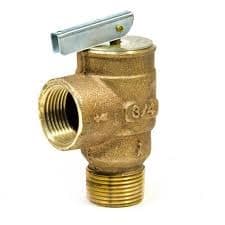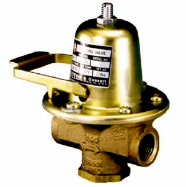Where’s That Water Coming From?
What to do if You Have a Water Leak
If you have a water leak in your home, it’s important to act quickly to minimize damage and prevent further issues. Here are some steps to help you deal with a water leak:

- Shut off the water: Locate the main water valve in your home and turn it off to stop the water flow. This valve is typically located near the water meter or where the main water line enters your home.
- Turn off electricity: If the leak is near any electrical outlets, switches, or appliances, turn off the power at the circuit breaker to reduce the risk of electrocution.
- Locate the source: Identify the source of the leak. Familiar sources include pipes, faucets, toilets, appliances, or water heaters. If you cannot locate the source, contact a professional plumber immediately.
- Contain the water: Use towels, rags, or buckets to contain and absorb the water. If the leak is severe, you may need a wet-dry vacuum or a sump pump to remove the water.
- Assess the damage: Inspect your home for signs of water damage, such as mold, mildew, or warped materials. Document the damage with photos and notes for insurance purposes.
- Contact your insurance company: Notify your insurance provider about the leak and the damages. They will guide you through the claims process and help you determine your water damage coverage.
- Repair the leak: Depending on the severity and location of the leak, you may be able to fix it yourself using a pipe repair clamp, plumber’s tape, or epoxy putty. However, contact a professional plumber for more complex issues or if you’re unsure about the repair.
- Dry and clean the affected area: After the leak is repaired, thoroughly dry and clean the affected area to prevent mold and mildew growth. Use fans, dehumidifiers, and open windows to expedite the drying process.
- Restore and repair: Replace or repair any damaged materials, such as drywall, flooring, or insulation. If the damage is extensive, consider hiring a professional restoration company.
Remember, it’s important to address water leaks promptly to minimize damage and prevent further issues. If you’re unsure about any step in the process, don’t hesitate to contact a professional for assistance.
When your gas or oil-fired hot water furnace is running during the heating season, you might be surprised to find a wet floor starting right below a long copper pipe towards the back of your system. This pipe is connected to a blow-off valve designed to relieve pressure by allowing excess water to “blow off” or get expelled systematically.
Three components usually lead to this problem, and for more years than I remember, I always recommend replacing them all simultaneously.
First is the blow-off valve itself, which will look something like this:

It is factory set to a specific pressure to match your furnace. When that pressure is exceeded, excess water can be relieved through a vertically attached copper pipe (hopefully into a bucket that you should always keep minimizing the need for mopping the floor). Note that the silver clip on top is simply a quick test to ensure excess water will flow if necessary.
Second is the feeder valve, which will resemble this part:

As the name suggests, the feeder valve keeps a constant level of water in a boiler system and will, over time, require a replacement. Contaminants and other water pollutants will cause the feeder to fail. Failure may mean too much or too little water added, so it’s a maintenance part that should be replaced anytime there is a concern of water pressure imbalance in the system.
Last but not least is the expansion tank, a 30-gallon model will often look like this:

As water is heated in a boiler, it expands, and that expansion, if not controlled, could cause pumps, pipes, and other components to burst. It also helps maintain relative pressure throughout the system. When the system is initially filled with cold water, the pressure is equal to that in the pre-charged expansion tank. Inside the tank, there is an air cushion diaphragm which is held flush against the tank. The added pressure as the water is heated is regulated by the expansion tank, and as the water cools, it allows the rubber diaphragm to return to its starting position.
WARNING: These tanks are usually filled at least partway with water, even when the system is off. That makes them extremely heavy and quite dangerous for the do-it-yourselfer. Likewise, even though it is empty, installing a new tank is arduous since they are heavy, odd-shaped, and tough to get the threads started a novice.
So there you go! You know more about hot water boilers than probably 90% of your friends and neighbors. While this is great should the topic come up at a cocktail party, we strongly recommend you leave this one to the pros.
Muccia Plumbing, Heating & AC has replaced HUNDREDS of these important parts and saved many Bergen County families. We’ve helped them avoid spending time and effort, buying the wrong parts, and cross-threading parts during reassembly. In particular, water feeders are “sweat fitted” (soldered together using a plumber’s torch and training). That is nothing to mess with when your floor is soaked, and your house is cold, so call a professional plumber.
Call us any time of the day or night, our telephone operators are standing by, and our techs are on call 24 X 7 X 365.
Hey, I get it. It’s cool to be handy. Tell you what. You do your car’s oil changes; we’ll do your plumbing. It’s a deal!
Still need help? No sweat. Call Muccia Plumbing, Heating & AC at 201-343-1414 or click the following link mailto:[email protected]
About Muccia Plumbing, Heating & AC
Exclusively Serving Bergen County, New Jersey
Michael Muccia is a Master Plumber and the owner and operator of Muccia Plumbing, Heating & AC. Muccia Plumbing, Heating & AC is a full-service Heating, Ventilation, and Air Conditioning (HVAC) service company based in and serving Bergen County, NJ, since 1978. The Muccia Plumbing, Heating & AC team of trained and certified service technicians offers various services, including general plumbing and heating maintenance, for residential and commercial clients.
Whatever your plumbing, heating, air conditioning, or ventilation needs are, it’s easier with Muccia Plumbing, Heating & AC. We treat our customers, large and small, with the best service in the industry. We know you have a choice when considering an HVAC company, and no matter what we do for you, we treat it as the most crucial job in our history. Our experience proves that we know how to work efficiently, which keeps costs low, uses only the best components within budget, and stands behind the work we do.
Muccia Plumbing, Heating & AC has locations in the following areas:
Hackensack | Hillside | Ramsey | Waldwick | Maywood | Tenafly

